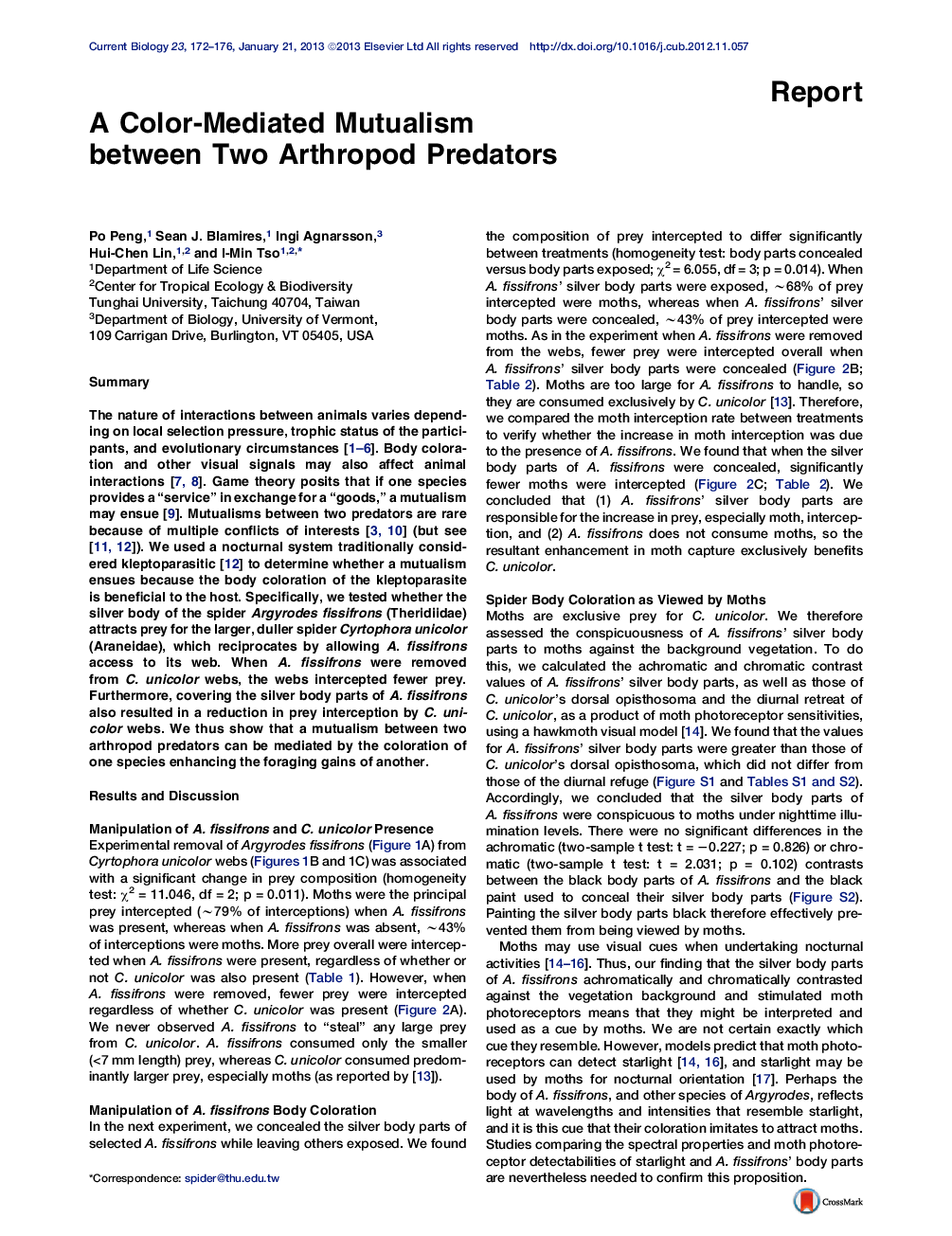| Article ID | Journal | Published Year | Pages | File Type |
|---|---|---|---|---|
| 2043092 | Current Biology | 2013 | 5 Pages |
SummaryThe nature of interactions between animals varies depending on local selection pressure, trophic status of the participants, and evolutionary circumstances [1, 2, 3, 4, 5 and 6]. Body coloration and other visual signals may also affect animal interactions [7 and 8]. Game theory posits that if one species provides a “service” in exchange for a “goods,” a mutualism may ensue [9]. Mutualisms between two predators are rare because of multiple conflicts of interests [3 and 10] (but see [11 and 12]). We used a nocturnal system traditionally considered kleptoparasitic [12] to determine whether a mutualism ensues because the body coloration of the kleptoparasite is beneficial to the host. Specifically, we tested whether the silver body of the spider Argyrodes fissifrons (Theridiidae) attracts prey for the larger, duller spider Cyrtophora unicolor (Araneidae), which reciprocates by allowing A. fissifrons access to its web. When A. fissifrons were removed from C. unicolor webs, the webs intercepted fewer prey. Furthermore, covering the silver body parts of A. fissifrons also resulted in a reduction in prey interception by C. unicolor webs. We thus show that a mutualism between two arthropod predators can be mediated by the coloration of one species enhancing the foraging gains of another.
► Cyrtophora unicolor webs without Argyrodes fissifrons intercept fewer prey ► The silver part of A. fissifrons’ body attracts prey to C. unicolor webs ► Moths, the primary prey caught by the webs, were consumed exclusively by C. unicolor ► A mutualism is mediated by body color in one spider enhancing foraging in another
